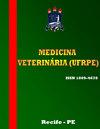玉米酒糟添加可溶性物质对肉鸡生产性能及胃肠道特性的影响
Q4 Veterinary
引用次数: 0
摘要
本试验旨在研究在肉鸡饲粮中添加不同水平的干酒糟对肉鸡生产性能、胴体产量、切口及胃肠道生物统计学的影响。试验选用COOB 500系1日龄鸡700只,采用完全随机设计,5个处理,7个重复,每个试验单位20只鸡,公母各10只。研究的DDGS水平为4;8;在试验饲料中添加12%和16%,加上对照处理(0%)。在出生后第1天和第42天,对肉鸡进行称重,作为剩余日粮,以获得生产性能变量。以增重(WG) (g/只/天)、日粮消耗量(RC) (g/只/天)、饲料转化率(FC)、中重(MW)、生产效率指数(PEI)和生存力(V)为指标,对42日龄时每批2只肉鸡进行屠宰,并对试验单位的中重进行加权和鉴定,以评估切肉产量、胴体和胃肠道生物计量学。使用统计程序SAS以5%的概率对评估参数进行方差分析。通过线性回归模型的变量分析和5%概率的Dunnett检验的对比来估计DDGS纳入的影响。对于生产1 ~ 42天的WG、FC、MW和PEI变量,在7.28%的水平上获得了较好的性能值;10 60%;12;10% e 12;92%。DDGCS添加量为12%和16%时,肉鸡胴体重、胸肉和脂肪均有降低。因此,在日粮中添加11.02%和7.44%,对胴体产量和胸重没有影响。本文章由计算机程序翻译,如有差异,请以英文原文为准。
CORN DISTILLERS' DRIED GRAINS WITH SOLUBLES ON PERFORMANCE AND GASTROINTESTINAL CHARACTERISTICS OF BROILERS
This study has as an objective to determine the effect of different inclusion levels of dried distillery grain with soluble (DDGS) on meat chicken diet to its performance, carcass yield and cuts and gastrointestinal tract biometry. A mixed lot of 700 one-day-old chickens from COOB 500 linage was used, distributed in a completely randomized design with 5 treatments, 7 repetitions and 20 broilers per experimental unit, were 10 was male and 10 female. The studied levels of DDGS were 4; 8; 12 and 16% of inclusion on experimental rations, plus the control treatment (0%). At the 1st and the 42nd days of life, the broilers were weighted, as the remains of ration to obtain variables of performance. For performance it was evaluated weight gain (WG) (g/bird/day), ration consumption (RC) (g/bird/day), feed conversion (FC), medium weight (MW), productive efficiency index (PEI), and viability (V). At 42 days of age 2 broilers from each lot was selected, weighted and identified with medium weight from the experimental unit for slaughtering and evaluation of cuts yield, carcass and gastrointestinal biometry. The evaluated parameters were submitted to variance analyses with 5% of probability using the statistical program SAS. Effects of inclusion of DDGS were estimated through variable analyses via linear regression models and the contrasts by the Dunnett test with 5% of probability. For the variables WG, FC, MW and PEI on the period of 1-42 days of production, it was obtained values of better performance on the level of 7,28%; 10,60%; 12;10% e 12;92% respectively. There was a reduction of carcass weight, of breast and fat of the broilers when using 12 and 16% of DDGCS. Therefore, it has indicated the inclusion of until 11, 02% and 7, 44% on the diet so there is no loss on carcass yield and breast weight, respectively.
求助全文
通过发布文献求助,成功后即可免费获取论文全文。
去求助
来源期刊

Medicina Veterinaria-Recife
Veterinary-General Veterinary
CiteScore
0.20
自引率
0.00%
发文量
21
期刊介绍:
A revista Medicina Veterinária (UFRPE) é um periódico científico do Departamento de Medicina Veterinária da Universidade Federal Rural de Pernambuco (UFRPE), composto por edições trimestrais. A revista tem a missão de publicar trabalhos originais relacionados à pesquisa em Medicina Veterinária, Produção Animal, Biologia e áreas correlatas, em forma de artigo científico, artigo de revisão, relato de caso e comunicação breve.
 求助内容:
求助内容: 应助结果提醒方式:
应助结果提醒方式:


